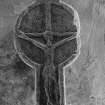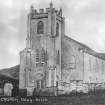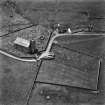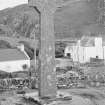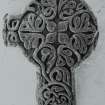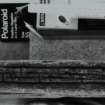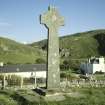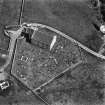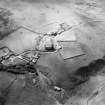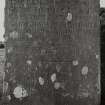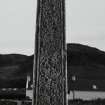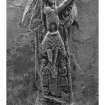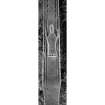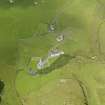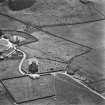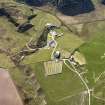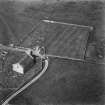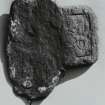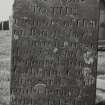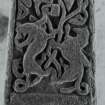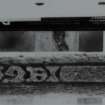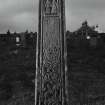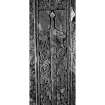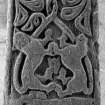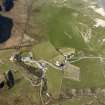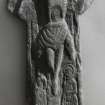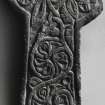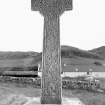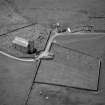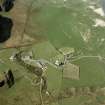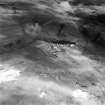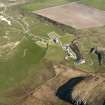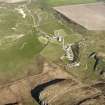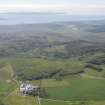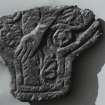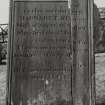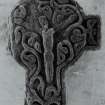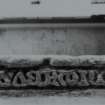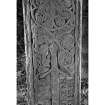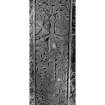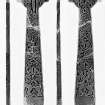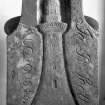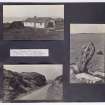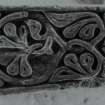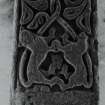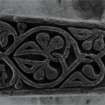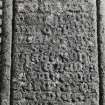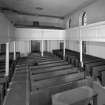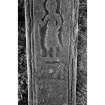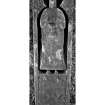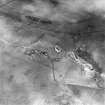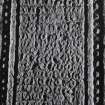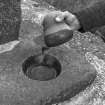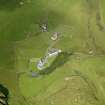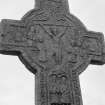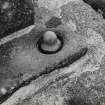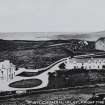Following the launch of trove.scot in February 2025 we are now planning the retiral of some of our webservices. Canmore will be switched off on 24th June 2025. Information about the closure can be found on the HES website: Retiral of HES web services | Historic Environment Scotland
Islay, Kilchoman, Old Parish Church, Kilchoman Cross And Burial Ground
Burial Ground (Early Medieval) - (Post Medieval), Cross (Medieval), Grave Slab (Medieval)
Site Name Islay, Kilchoman, Old Parish Church, Kilchoman Cross And Burial Ground
Classification Burial Ground (Early Medieval) - (Post Medieval), Cross (Medieval), Grave Slab (Medieval)
Alternative Name(s) Cill Chomain Cross And Tombstones
Canmore ID 37435
Site Number NR26SW 10.01
NGR NR 21600 63225
Datum OSGB36 - NGR
Permalink http://canmore.org.uk/site/37435
- Council Argyll And Bute
- Parish Kilchoman
- Former Region Strathclyde
- Former District Argyll And Bute
- Former County Argyll
NR26SW 10.01 21619 63210
(NR 216 632) Cill Chomain (NR)
OS 6" map, Argyllshire, 2nd ed., (1900)
The name applies to the old burial ground surrounding the modern church (ONB 1878). The fomer church was pulled down in 1825 to make way for its successor and nothing seems to be known of it, except that the site of the sculptured stone (No 35 on plan) said to mark the late 16th century grave of Sir Lauchlan MacLean at NR 2162 6322 was within the walls of the old church. The stone is in fact earlier than the late 16th century and bears the effigy of a priest. Other Medieval stones in the grave-yard are mostly 15th century, and include the 8ft 4 ins high 'Kilchoman Cross' at NR 2162 6330, at whose base are a pestel and 'cups' used in a wishing ceremony.
Name Book 1878; R C Graham 1895; W D Lamont 1972; R W B Morris 1969.
The old burial ground at Kilchoman is incorporated within the present grave-yard but there is no ground surface evidence of the former church (the sculptured stone - No 35 on plan(4) - is at NR 2162 6321).
The Kilchoman Cross and the other Medieval stones are as described.
Surveyed at 1:2500.
Visited by OS (B S) 3 May 1978.
Scheduled as Kilchoman Church, Cill Chomain Cross and tombstones... in Kilchoman burial ground.
Information from Historic Scotland, scheduling document dated 8 December 2000.
Field Visit (October 1982)
NR216 632.
Funerary Monuments and Crosses
Number 2 stands in a field 330m SW of the church (see NR36SW 9, NR 213 630). Number 1, which formerly lay beside a track on a hillside 380m ESE of the church (see NR26SW 1, NR 219 631), and numbers 14 and 26, which were formerly in the church porch, are now in the Museum of Islay Life, Port Charlotte. Number 12, formerly used to mark a grave in the churchyard, is in the National Museum of Antiquities of Scotland. Numbers 30 and 31 are in the Campbell of Ballinaby burial-enclosure and the remaining stones are in the churchyard, most of them in the positions marked on Graham's plan.
Medieval
(3) Tapered slab bordered by a triple moulding, 1.87m by 0.46m. At the top there is a foliated cross, then a central sword with lobated pommel and inclined quillons expanded at the ends. The hilt is flanked by inscribed panels, now illegible, and the sword-blade by plant-scrolls springing from the tails of two animals. (Graham, 1895). lona School, 14th-15th century.
(4) Tapered slab bordered by a roll-moulding, 1.64m by 0.44m. The general scheme of decoration has been similar to that on number 3, although to the right of the sword-blade the foliage branches from a central stem. The panels flanking the hilt, which may originally have borne an inscription, have been recut to show (left) gyronny of eight for Campbell, a skull, and the date 1678, and (right) a galley with no sail but with pennon flying, cross-bones, and the initials DC. (GAGM cast, no. 174; Graham, 1895). lona School, 14th-15th century
(5) Tapered slab bordered by a roll-moulding, 1.83m by 0.47m; much worn. The general design appears to have resembled that on number 3, and the inscription on each side of the sword-hilt is again illegible. The undamaged edges of the hand-grip show traces of horizontal ribbing, representing some form of binding or decoration. (Graham, 1895). lona School, 14th-15th century.
(6) Tapered slab bordered by a roll-moulding, 1.76m by 0.48m; much worn. At the top there is a foliated cross, linked to plant-scrolls which surround a central sword similar to that on number 3. (Graham,1895). lona School, 14th-15th century.
(7) Tapered slab bordered by a triple moulding, 1.81m by 0.54m; much worn. At the top there is a circular pattern of
interlaced foliage, and then a central sword similar to that on number 3, flanked by plant-scrolls springing from the tails of animals. To the right of the hilt is a panel for an inscription, now obliterated. (Graham, 1895). Probably lona School, 14th-15th century.
(8) Upper part of a tapered slab bordered by a triple moulding, 1.36m by 0.55m; the lower fragment recorded by
Graham is lost. The general design has been similar to that on number 7, although the plant-scrolls have extended onto
the space right of the sword-hilt. The original ornament below the right quillon has been replaced by the inscription:
HEER LYETH C[OLIN CAMPBEL OF]/SINDERLINE
DECE[ASED MAY 6 1663]
(Graham, 1895). Probably lona School, 14th-15th century.
(9) Tapered slab bordered by a row of nail-head ornament between roll-mouldings, 1.80m by 0.51m. The effigy of a priest, standing in a deeply incised cusped niche ornamented with nail-head, occupies the upper two-thirds of the stone, the head being in high relief and the rest of the figure in false relief. The figure wears Eucharistic vestments and at the side, where it has been protected from wear, it can be seen that the chasuble and the high apparel at the neck have been richly ornamented, with foliage and interlace respectively. The hands are joined in prayer, and beneath them is a chalice. Traces of foliage decoration are visible in the lower part of the slab. (Graham, 1895). lona School, 14th-15th century.
(10) Tapered slab bordered by a row of nail-head ornament between roll-rncaildings, 1.95m by 0.57m; much
worn. It bears the effigy of a priest in Eucharistic vestments, standing in a cusped ogival niche. The apparel at the neck has been ornamented with interlace similar to that on number 9. There is foliage-ornament in the top corners of the slab, and also a chalice in the left corner, while there are traces of a foliated cross at the foot. (Graham, 1895). lona School, l4th-15th century.
(11) Tapered slab, 1.94m by 0.45m, bearing the effigy of a priest in Eucharistic vestments. The figure is much worn and the front of the head, which was set in an ogival niche, has split off. The hands are joined in prayer, and a chalice is carved below them. There are traces of foliage at the foot of the slab, but the remaining ornament has been obliterated by two inscriptions commemorating Duncan McLachlan, who died in 1732, and his wife Marrion dark who died in 1755.
(Graham, 1895). lona School, l4th-15th century.
(12) Free-standing cross, 1.77m in height and 0.47m in original span across the arms; the shaft tapers from 0.30m by
65mm at base to 0.18m by 55mm below the disc-head, whose diameter is 0.37m. The shaft is broken across in two
places, and the left arm of the cross-head is lost. On the front of the cross-head is carved the Crucified Saviour, His arms outstretched and His feet crossed. The rood is not represented, and the figure is surrounded by plant-stems
springing at the foot of the shaft from the tails of two beasts between whose hindlegs is set a small animal's head. The
back of the cross is covered by similar plant-stems, whose leaves are joined in a quatrefoil at the centre of the cross-
head. The animals at the foot, a griffin and a leonine beast holding in its forepaw a handled object, probably a satchel or water-bucket, closely resemble those on the late 14th-century Campbeltown Cross." The angles are wrought with roll-
mouldings, and the edges bear an inscription in Lombardic capitals which begins below the right arm and continues on
the left edge, where the remaining space is filled with key-ornament:
+HEC EST CRVX FAC[TA] PRO ANIMABUS DONCANI
MECINNIRLEGIN ET MAR/I ET MICHAELIS
'This is the cross made for the souls of Duncan MacNerlin and Mary and Michael '. Duncan MacNerlin (meic inn fhir leginn) belonged to a family claiming descent from the fer leginn or lector of a Celtic monastery, and Donald MacNerlin, possibly a son of Duncan, was vicar of Kilchoman from 1427 to 1462 or later. (Steer and Bannerman ; Graham, 1895; PSAS, 61 (1926-7), 149-50; ibid,65(1930-l), 19-20; ibid.,66(1931-2), 442-5). lona School, probably late 14th - early 15th century.
(13) Free-standing cross in its original socket-stone at the SE angle of the churchyard. It measures 2.57m in height by
0.97m across the arms, the diameter of the disc-head being 0.66m; the shaft tapers from 0.45m by 0.11m at the base to 0.33m by 85mm at the neck. Both faces are bordered by continuous nail-head ornament between roll-mouldings, and
the edges are undecorated. The E face of the cross-head bears an elaborate representation of the Crucifixion. The figure of Christ, set frontally and with steeply inclined arms, hangs from a rood ofcross-raguly form and is flanked, at His right, by St Mary and another saint who holds a book, and at His left by St John, also holding a book, and by St Michael, who stands above a coiled serpent. Angels are shown in both side-arms, and an irregular knot of interlace fills the top arm and the remaining space above the rood. The shaft contains, in descending order: a cusp-headed niche with the figures of two men holding books, probably the donor and his father; an inscription (infra)', intertwined plant-stems rising from a cusped niche which contains a horse and rider; and at the base a cruciform interlace knot. * The w face of the cross-head is filled with a complex interlaced pattern incorporating interlocked circles," and the shaft with plant-stems springing from the tails of two confronted animals at the base. The inscription on the front is in Lombardic capitals and reads:
HEC EST C/RVX PER T/AVEISUM [P]/ATRICII ME/DICLIM
PRO A/NIMABU[S] PAT/RIS ET MATR/IS ET UXORI/S SUE
AC OMN/IUM FIDELIUM/DEFUNCTOR/[U]M ET DICTI . . .
'This is the cross by Thomas, son of Patrick, doctor, for the souls of his father, mother and wife, and of all the faithful
departed, and of the said...' Thomas and his father Patrick probably belonged to the celebrated Beaton family of physicians, members of which held land at Ballinaby and elsewhere in Kilchoman parish in the late medieval period, bordered by an inner moulding linked to plant stems and rosettes which surround the rood. At the foot of the shaft are
traces of animals, probably a deer-hunt. On the back of the cross-head double-beaded bands are plaited round a small
central boss and linked to foliage and rosettes, and to a plant-scroll which fills the shaft. (GAGM cast, no. 175; Graham,
1895). lona School, 14th-I5th century.
(15) Tapered slab with bevelled edges, pointed at the foot, 1.90m by 0.60m; much worn. Within a plain margin there isa large panel bounded by a roll-moulding and a row of nail-head ornament, which contains a sword similar to that on number 3 surrounded by plant-stems and animals, including a stag-hunt. To the right of the blade is a three-line inscription in Lombardic capitals which begins + me IACET . . . ('Here lies,. .'); the rest of the inscription is illegible. At the foot of the slab is an inverted galley with a long mast but without a yard or sail. (Graham, 1895).
14th-15th century.
(16) Tapered slab bordered by a triple moulding, 1.74m by 0.39 m. In the lower half there is a sword similar to that on number 3, and above it the hull of a boat. The rest of the original decoration has been obliterated by the date 1681 and the inscription:
THIS S/TON BELONGS TO ALEX(ANDER) CAMPBEL
SON TO DONALD MC/ALESTER ROY IN ILA'?*
& MARY CAMPBEL HIS WYF
(Graham, 1895). 14th-15th century. MID
(17) Tapered slab, 1.94m by 0.56m. There is a foliated cross at the top, and then two opposed beasts linked by their tails to an overall pattern of plant-scrolls. In various places among the foliage along the top and right margins there are worn Lombardic capitals, probably reading me / IACET ('Here lies'), but only the letters CE are legible. This inscription was presumably continued at the bottom of the slab, where the original ornament has been replaced by an hour-glass with an illegible inscription beneath it; a skull and cross-bones with the legend MEMENTO / MORI ('Remember death'); and the inscription:
THIS STON BELONGS/TO ALEX(ANDER) CAMPBELL
SON TO DONALD MC/ALESTER ROY IN ILA
&/MARY CAMPBEL HIS/WYFE 1681
14th-15th century.
(18) Tapered slab bordered by a row of nail-head ornament between roll-mouldings, 1.83m by 0.51m; much worn. At the top there is a foliated cross, and then a sword similar to that on number 3, flanked by plant-stems, 14th-15th century.
(19) Tapered slab bordered by a triple moulding, 1.89m by 0.56m; much worn. At the top there is a foliated cross, and then a sword similar to that on number 3, flanked below the quillons by plant-stems springing from the tails of twc animals, 14th-15th century.
(20) Tapered slab bordered by a roll-moulding, 1.83m by 0.34m. At the top there is a foliated cross which branches into plant-stems flanking a sword similar to that on number 3. At the foot there is a casket and a rectangular panel probably intended for an inscription. (Graham, 1895). 14th-15th century.
(21 ) Tapered slab, perhaps intended for a child, 1.04m by 0.37m and bordered by a double moulding; much worn. In the upper half is a cusped niche containing the figure of a man in bascinet and aketon and carrying a spear and sword, while below the niche is an animal. The decoration in the lower part of the slab has been effaced, 14th-15th century.
(22) Tapered slab, pointed at the top and 1.77m long. A central sword is flanked to the left by an animal above the quillon and a plant-stem below, but the rest of the original decoration has been obliterated by an inscription
commemorating Duncan McLachlan who died in 1781 aged 18, and Mary Mcintyre, wife of Lachlan McLachlane, who died in 1783. (Graham, 1895). 14th-early 16th century.
(23) Fragment, 1.01m long, from the lower left edge of a tapered slab bordered by a triple moulding. The blade of a central sword is flanked by plant-scrolls, 14th-early 16th century.
(24) Tapered slab, 1.83m by 0.50m, bordered by a roll-moulding. Except for traces of a plant-scroll at the lower left, the decoration is effaced, 14th-early 16th century.
(25) Shaft of a free-standing cross, 1.22m in visible height by 0.22m in width at the foot. On the front, within triple mouldings, is the lower part of the figure of the Crucified Saviour on a rood of cross-raguly type, and then an abbot or bishop in Eucharistic vestments, the right hand raised in benediction. On the back, within a border formed by a row of nail-head ornament between roll-mouldings, there is a scroll incorporating rosettes and ending at the foot in a beast. The edges of the shaft are decorated with plant-stems and miniature rosettes. (Graham, 1895; Steer and Bannerman, ). 14th-early 16th century.
(26) Head and part of the shaft of a free-standing cross 0.73m high. The top of the upper arm and both side-arms have been broken off; the disc is 0.38m in diameter. On the front, within a flat margin, is a representation of the Crucified Saviour set on a plain background. The carving is unsophisticated in character and was probably produced locally in the 16th century. (Graham, 1895)
(27) Tapered slab of chloritic quartz-schist of local origin, 1.96m by 0.53m. It bears the incised outline of a large double-handed sword with round pommel and horizontal quillons expanded at the ends. Local, 16th century.
(28) Tapered slab of local quartz-schist, 1.-83m by 0.46m, bordered by a flat moulding. It bears the outline of a sword
similar to that on number 27, but with a tang button projecting from the pommel. Below the right quillon there appears to be a chalice. Local, 16th century.
Post-Reformation
(see also numbers 4,8, II, 16, 17 and 22)
(29) Tapered slab of chlorite-schist, 1.89m by 0.45m, bordered by a narrow roll-moulding. A marginal inscription reads:
HIC IACET/LACHLAN(US) CAMPBEL(US) DE DAIL
CELEBERRIMI DOMINI CALDERAE/NEPOS/
QUI DUODECIMO DIE DECEMBRIS ANNO D(OMI)NI 1689
F/yris CONCESSIT
'Here lies Lachlan Campbell of Daill, nephew (or grandson) of the renowned Lord of Cawdor, who expired on 12 December 1689'. At the head of the central panel is a shield charged: quarterly, 1st, gyronny of eight; 2nd, a stag's head cabossed; 3rd, on a fess, three buckles; 4th, a galley, sail furled," with the motto NE OBLIVISCARIS ('Be mindful'). The date 1689 is followed by a central sword with straight quillons and a curved knuckle-guard. The hilt is flanked by foliage and the blade by the verse:
HUMANITY AND PIETY/
ARE GRACES SHYNING CLEER/
AND THESE IN TRUTH WERE IN A YOUTH/
OF BIRTH AND WORTH LYES HEER
At the foot there is a panel containing the inscription VIVIT POST/FUNERA/VIRTUS ('Virtue lives on beyond the grave'). Lachlan Campbell, who obtained a wadset of Daill in 1685, was grandson of John Campbell of Cawdor (d. 1592) and nephew of Sir John, the first Campbell owner of Islay."
(30) Much-worn sandstone slab of 18th-century character, apparently commemorating Archibald Campbell of Ballinaby.
(31) The pediment, cornice and frieze of an 18th-century mural monument, built into the w wall of the Campbell of Ballinaby burial-enclosure, and now associated with a renewed panel commemorating Dugald Campbell of Ballinaby and his children.
(32) Recumbent slab commemorating John, son of Duncan Campbell of Ellister, who died in 1722, and his brother William Campbell who died in 1729. It bears emblems of mortality carved in relief, and at base the inscription VIVUNT FUNORA (sic) VIRTUTE (7'The dead live on by their virtue').
(33) Recumbent sandstone slab commemorating Colin Campbell of Ellister, who died in 1730, and Alexander Campbell of Ellister who died in 17[?46]. It bears an armorial achievement with a shield: quarterly, 1st, gyronny of eight; 2nd, a stag's head cabossed; 3rd a galley, sail furled, oars in action; 4th, ?gyronny of eight.
(34) Recumbent slab bearing emblems of mortality and commemorating Archibald, son of Duncan Campbell of Ellister, who died in 1754.
(35) Much-worn sandstone slab of 18th-century character, carved in relief with an armorial achievement. The shield bears: quarterly, 1st, a stag's head cabossed; 2nd, gyronny of eight; 3rd, a galley, sail furled; 4th, a mullet. This slab evidently commemorated a member of a family claiming descent from the Camobells ofCawdor.
(36) Small headstone bearing in low relief a lighthouse, with parabolic-curved tower, high-level doorway, lozenge-patterned guard-rail, and lantern with horizontal glazing-bars. It bears the incised inscription JA(ME)SB SCOTT/AUGUST) 20TH 1845. James Scott was assistant keeper at the Rinns of Islay lighthouse (RCAHMS 1984, No. 441) from 1842 to 1847, and this stone oresumablv commemorates one of his family."*
Visited October 1982
RCAHMS 1984
Measured Survey (1983)
RCAHMS created a measured drawing of the 14th-15th century cross fragment Kilchoman 14, now in the Museum of Islay Life, at a scale of 1:10. The ink drawing was published at 1:15 (RCAHMS 1984, fig. 201B).













































































